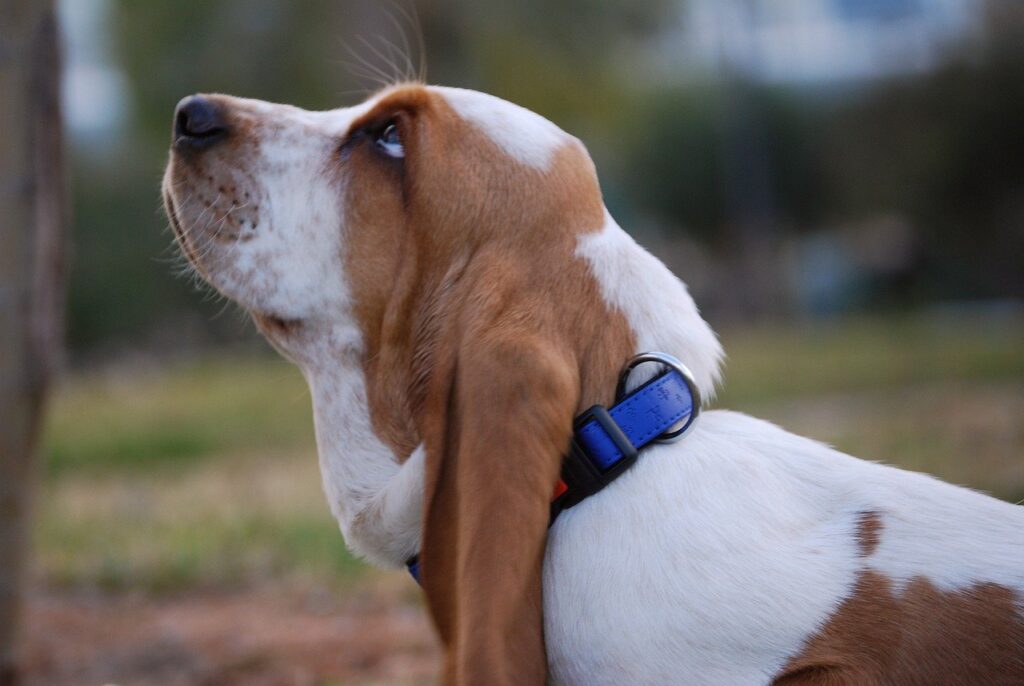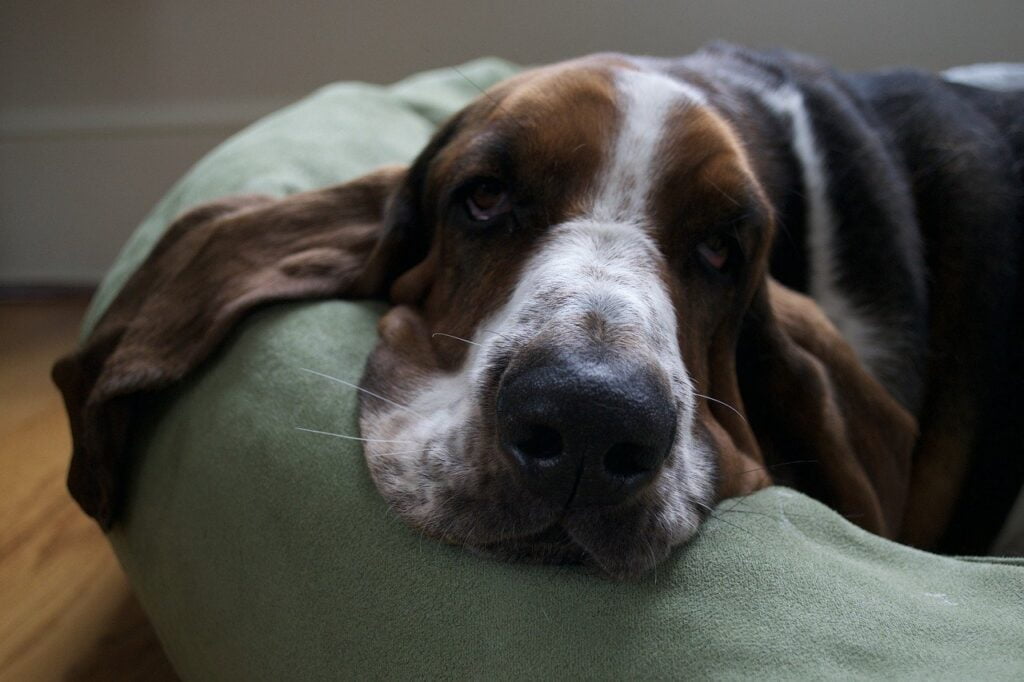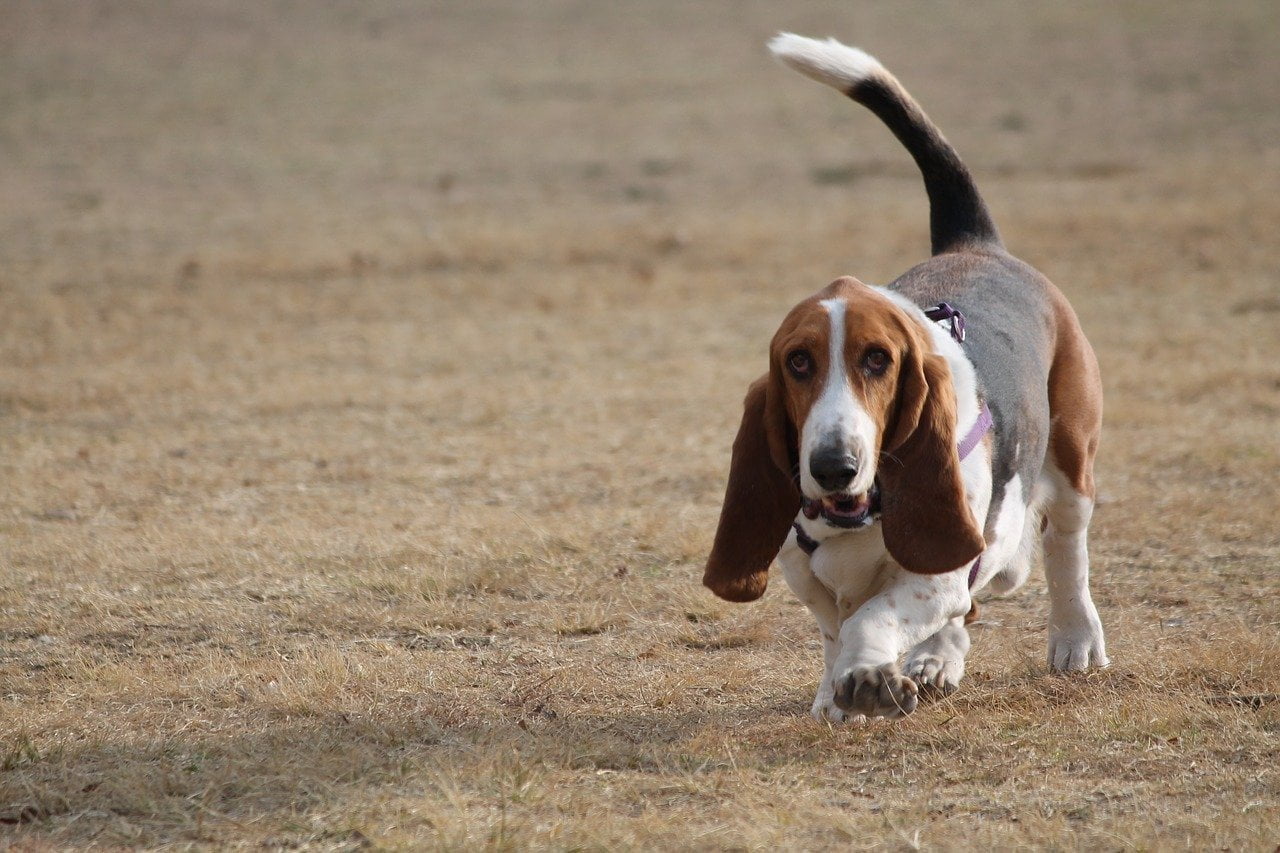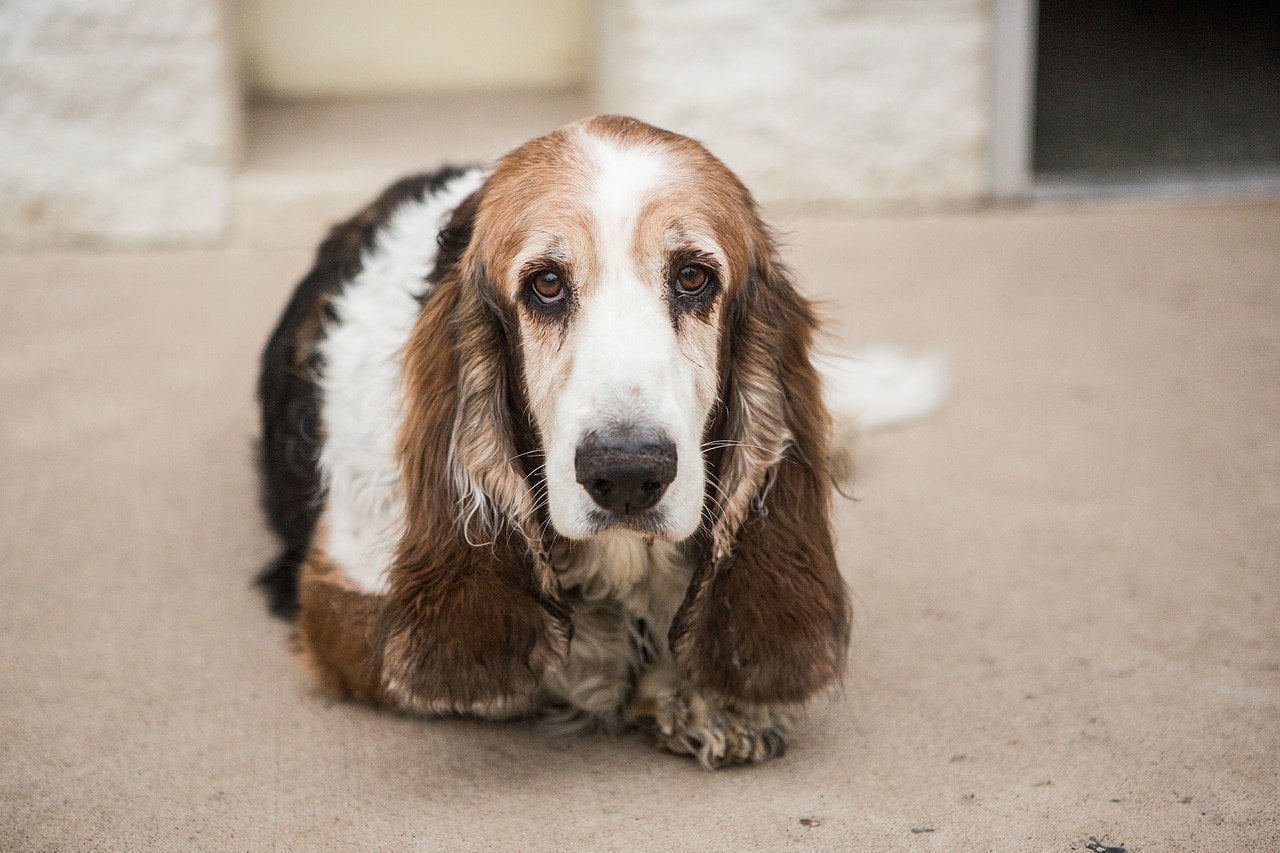
- Home
- Stud Dogs
Some of our most popular Stud Dog Breeds:
- Puppy Litters
- Dog Services
- Dog Breed Profiles
- Blog
- Contact Us
Basset Hound Breed Profile

The Basset Hound is perhaps best known for his long drooping ears, short stumpy legs and long body. He is part of the Hound Dog group and originally bred to track and hunt small animals. His excellent sense of smell is beaten only by the Blood Hound.
These days the Basset Hound is most often found presiding over his favourite couch in the living room as this dog makes an incredibly friendly and family orientated pet. They are affectionate and loving but have a determination and stubbornness that must be controlled by a firm but gentle owner.
Typical Basset Hound Facts:
Height: 33 to 33 cm / 33 to 38 inches
Weight: 23 to 29 kg / 50 – 65 lbs
Average Litter Size: 8
Life Expectancy: 10 – 12 years
Good with Children: Yes
Kennel Club Classification: Hound Group
Colour of a Basset Hound:
A Basset Hound’s coat is short and smooth and the most classic colour combinations are the tri-colour, a combination of white, black and tan, and the lemon basset, a bi-colour. However the Kennel Club will accept any combination of hound colours.
Grooming a Basset Hound:
A Basset Hound does shed hair throughout the year and so would not appeal to people with allergies. However his short coat lends itself to minimal need for grooming and his coat will retain its beautiful magnificence without frequent bathing – twice a year is quite sufficient. However Basset Hounds do have a distinctive odour which can be controlled with bathing. Their ears require cleaning once a week and you should keep an eye on their toenails and get them clipped every three months.

Basset Hound Common Ailments/Health Issues:
The Basset Hound breed can be prone to obesity due to their voracious appetite and ability to sniff out hidden treats and tit bits. They must never be overfed as due to their short legs and muscular build they can be prone to excess strain on their ligaments, spine and legs. The Basset Hound is often believed to be a sedate couch potato and it is true that he will happily while away a rainy afternoon on the settee. However when his hunter instincts take over out in the countryside and he will surprise you with his swift and deft running skills. Unfortunately Basset Hounds can get over excited and put extra strain on his joints when tracking a scent. Both scenarios can lead to lameness.
The other common problem is otitis externa, more commonly known as smelly ears, however regular cleaning of ears will keep this problem at bay.
Temperament of the Basset Hound:
Basset Hounds are a truly friendly and sociable animal who love being part of the family which they view as their pack. As such they will not tolerate being separated for long from their owners so if you need to stay away from home for longer than four hours at a stretch then this breed is not for you. They also need to know where they stand within the pack otherwise they can very quickly dominate the household.
They have an innate sense of fun and are extremely mischievous. Their hunting ancestry will often lead them to track and steal your own possessions be it your underwear or socks and getting him to relinquish his prize can be quite a challenge. These dogs are extremely food motivated so bribery and exchange is more effective than confrontation.
They have a strong resonant bark that can often be mistaken for aggression. However this breed is gentle and loving and is great with kids.
Training a Basset Hound:
Training is a touchy point with the Basset Hound as they are dogmatically resistant to it. However firm and persistent training started at an early age will teach this character some manners. Be gentle with your Basset Hound however, these are sensitive creatures and heavy-handedness will not work.
You should expose the young Basset hound to as many experiences as possible and encourage lots of play. This will build trust between you and your Basset and slowly establish you as the pack leader. They will thrive on a good routine and plenty of rest and supply plenty of toys to chew to save your furniture.
They will be slow to catch on to house training. This is not due to a lack of intelligence however. Keep a close eye on him after meals and give him plenty of praise when he does the ‘business’ in the right spot.

Exercise for a Basset Hound:
While your Basset hound puppy is growing you should avoid putting their joints under strain as they are heavily built hounds. Until they are eight months old, five minute walks and playtime in the garden is enough. After that, keep walks to fifteen minutes building up to 30 minutes by the time they are one year old. You can exercise a fully grown Basset hound as much as you like with at least one decent walk a day.
History of the Basset Hound:
‘Basset’ was used to refer to a dog breed in writings about hunting by Fouilloux in 1585. There are illustrations in the book of a huntsman and his so-called ‘badger dogs’ which are considered to be the first drawings of the Basset Hound breed.
It is believed that at the French Abbey of St Hubert resident friars played a large role in selective breeding taking strains from a variety of French hounds to develop a lower set and therefore slower paced dog that could be comfortably followed by foot. Originating from the French word bas, Basset means ‘low structure’ or ‘dwarf’.
In the 1700’s the Basset Hound breed was found extensively across France with regional variations in appearance. Around this time it is said George Washington was given a pair of Basset Hounds as a present from Lafayette. By the 1800’s the Basset Hound had been exported to the United States and England.
In the mid-19th century there were two eminent dog breeders, each producing a Basset Hound that differed slightly in appearance. M.Lane’s breed was of shorter ear, broader skull and was in the main lemon and white. Count Le Couteulx bred Basset Hounds that had a doming of the top skull, narrow head and a softer eye with a down-faced expression. They were more striking in the magnificent tricolours and were therefore more sought after.
In 1866 a pair of Basset Hounds was brought to England by Lord Galway. He bred a litter of five puppies but there was no interest shown in the breed until 1874 when the Basset hound known as ‘Model’ was imported by Sir Everett Millais. He became known as the ‘father of the breed’ due to his undying drive and determination to develop the breed. The first of his Basset Hounds was exhibited in 1875 but the greatest interest was created in 1880 when he entered the Wolverhampton show. Some years later there was more interest generated when Basset Hounds were added to the royal dog kennels by Queen Alexandra.
